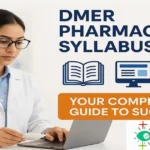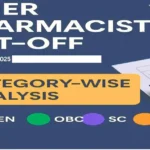
Cleaning validation is essential for ensuring that pharmaceutical manufacturing equipment is free from residues that could contaminate subsequent products. Regulatory agencies worldwide mandate this validation as a key component of Good Manufacturing Practices (GMP).
Global regulators have established comprehensive guidelines to standardize this process, emphasizing patient safety, product quality, and the prevention of cross-contamination. This article reviews and compares key global regulatory guidelines to offer a cohesive and practical understanding of validation practices.
Also read: Ultimate Guide to Cleaning Validation in Pharma Industry – A comprehensive beginner-to-advanced resource on validation principles, steps, and implementation.
1. US FDA – Guide to Inspections: Validation of Cleaning Processes (2014)
This guide outlines the FDA’s expectations during inspections related to cleaning validation:
- Emphasizes the need for documented, validated cleaning procedures to prevent cross-contamination.
- Requires written SOPs, justified residue limits, and approved validation protocols.
- Supports direct sampling (e.g., swabs) over rinse samples for reliable residue detection.
- Rejects “test until clean” practices—cleaning must be effective on the first validated attempt. The FDA says if you have to keep cleaning and testing again, it means your cleaning process is ineffective, because it keeps leaving behind unacceptable residue.
- Stresses the importance of equipment design, operator training, and microbial control.
Key takeaway: Validation must be science-driven, well-documented, and verifiable to meet FDA inspection standards.
2. US FDA – 21 CFR § 211.67: Equipment Cleaning and Maintenance
This regulation outlines mandatory practices for maintaining pharmaceutical manufacturing equipment:
- Requires cleaning, maintenance, and (if needed) sterilization/sanitization at appropriate intervals to prevent contamination or equipment failure.
- Written procedures must be in place for all cleaning and maintenance activities, and they must include:
- Clear assignment of responsibilities
- Cleaning and maintenance schedules
- Detailed cleaning methods and materials used
- Removal of previous batch info
- Protection of cleaned equipment before use
- Pre-use inspection for cleanliness
- Documentation of all cleaning, sanitizing, and inspection activities.
Key takeaway: Equipment must be inspected, maintained, and well-documented to ensure drug product quality and prevent cross-contamination.
3. EMA – Guideline on setting health based exposure limits for use in risk identification in the manufacture of different medicinal products in shared facilities and Q&A
The European Medicines Agency (EMA) recommends the use of a scientific and toxicology-based approach to validation, especially for shared facilities.
- Encourages scientific evaluation of toxicological and pharmacological data.
- Requires setting residue limits using HBELs such as PDE and MACO.
- Emphasizes worst-case product scenarios and risk-based calculations to prevent cross-contamination.
- Requires robust documentation of protocols, toxicological assessments, test methods, and data.
- Requires periodic revalidation—triggered by formulation changes, equipment updates, or revised HBELs.
- Applies to shared manufacturing facilities where cross-contamination risk is high.
Key takeaway: EMA sets a high bar with toxicologically justified limits, continuous improvement, and strict documentation expectations.
4. WHO – Good manufacturing practices: guidelines on validation TRS 1019, 2019 – Annex 3, Appendix 3 – Cleaning validation
The World Health Organization (WHO) gives global guidance on how processes should be done in pharma facilities to prevent cross-contamination:
- Defines cleaning validation as “documented evidence” that equipment is cleaned well enough to meet safe and acceptable predefined levels.
- Focuses on a risk-based validation approach considering product strength, toxicity, and how the equipment is used.
- Recommends setting safe residue limits using Worst Case Scenario, health-based exposure limits (HBELs), or a well-justified alternative.
- Visual checks can be part of the process, but suggest using swab and rinse sampling to test the leftover residues after cleaning.
- Emphasizes keeping clear records of cleaning steps, testing results, and when to revalidate the process.
- Encourages a life-cycle approach and suggests revalidation upon major changes.
Key takeaway: WHO encourages a practical, science-based approach that protects patient safety and supports global GMP standards.
5. PIC/S: PI 006-3 (2007) – Recommendations on Validation Master Plan, Installation and Operational Qualification, Non-Sterile Process Validation Cleaning Validation
The Pharmaceutical Inspection Co-operation Scheme provides global inspection guidance through PI 006-3, emphasizing validation as a critical GMP element within the broader validation lifecycle.
- PI 006-3 elaborates on cleaning validation documentation, sampling methods, and revalidation triggers.
- Provides comprehensive guidance on equipment design, detergent validation, and analytical method validation.
- Stresses a risk-based approach, including the use of bracketing and worst-case selection when validating multiple products on shared equipment.
- Requires at least three successful cleaning validation runs to confirm reproducibility and consistency.
- Recommends avoiding “test until clean” approaches—cleaning must work as designed the first time.
- Acceptable sampling methods include swabbing (direct) and rinse sampling (indirect), supported by validated analytical methods.
Key takeaway: PIC/S emphasizes validation as a structured, documented, and science-based process aligned with global GMP expectations.
6. PIC/S: PI 046-1 (2018) – Guideline on Setting Health-Based Exposure Limits for Use in Risk Identification in the Manufacture of Different Medicinal Products in Shared Facilities
PIC/S PI 046-1 provides a harmonized, science-based approach for controlling cross-contamination in shared pharmaceutical manufacturing environments. It focuses on setting Health-Based Exposure Limits (HBELs) using toxicological principles, moving away from outdated, arbitrary limits.
- Replaces traditional fixed limits (e.g., 1/1000 dose) with toxicologically derived values like PDE (Permitted Daily Exposure) and TTC (Threshold of Toxicological Concern).
- Guides manufacturers on evaluating hazards, NOAEL, and applying adjustment factors (F1–F5) to derive accurate PDE values.
- Applies to highly active, sensitizing, or genotoxic compounds, recommending a TTC of 1.5 µg/day when specific data are lacking.
- Encourages risk-based cleaning validation based on actual pharmacological and toxicological risks, not generic thresholds.
- Considers bioavailability and route-to-route extrapolation to improve risk accuracy.
- Recognizes the need for dedicated equipment/facilities when risks can’t be adequately controlled.
- Allows flexibility for investigational products, veterinary drugs, and biologics, as long as justifications are scientifically sound.
Key takeaway: PI 046-1 helps manufacturers set defensible limits and make facility-sharing decisions using structured, internationally aligned toxicological risk assessments.
7. APIC – Guidance on Aspects of Cleaning Validation in Active Pharmaceutical Ingredient Plants
The Active Pharmaceutical Ingredients Committee (APIC) provides detailed guidance specific to API production:
- Highlights differences between chemical and pharmaceutical manufacturing (e.g., higher carryover limits may be acceptable in chemical APIs).
- Recommends bracketing and worst-case assessment strategies.
- Offers multiple calculation approaches: HBEL, general limits, and product-specific criteria.
Key takeaway: APIC offers practical, flexible validation strategies tailored for API facilities.
8. ISPE Guide: Cleaning Validation Lifecycle – Applications, Methods, and Controls & Baseline Guide Vol 7: Risk-Based Manufacture of Pharma Products 2nd Edition
The ISPE Validation Lifecycle Guide provides a deep dive into:
- Integration of Risk-Based Manufacture of Pharmaceutical Products (Risk-MaPP).
- Cleaning strategy design, process mapping, and critical parameter identification.
- Real-world case studies, validation protocols, and tools for HBEL calculations.
Key takeaway: ISPE bridges regulatory expectations and industry best practices with actionable tools.
9. PDA Technical Report No. 29, Revised 2012 (TR 29) Points to Consider for Cleaning Validation
The Parenteral Drug Association (PDA) offers:
- Detailed recommendations on analytical methods, swab/rinse sampling, and setting residue limits.
- Risk-based considerations for visually clean criteria, product grouping, and equipment trains.
- Acceptance criteria based on ADE, LD50, or default limits.
Key takeaway: PDA TR 29 is a go-to industry reference for deep technical guidance.
Final Thoughts
Despite differences in geography and terminology, global regulatory bodies are aligned on key principles:
- Use of health-based exposure limits.
- Integration of risk management and lifecycle principles.
- Gives importance to scientific justification, appropriate sampling, and robust documentation.
To be inspection-ready, firms should align their validation strategy with evolving regulatory expectations and continuously monitor performance using a lifecycle approach.
Found this post helpful?
- Share it with your friends & colleagues.
- Subscribe to PharmaSpectacle to stay ahead in the pharmaceutical world with valuable pharma knowledge and professional growth tips.
- Got a question? Drop it in the comments below — we reply to every single one!




